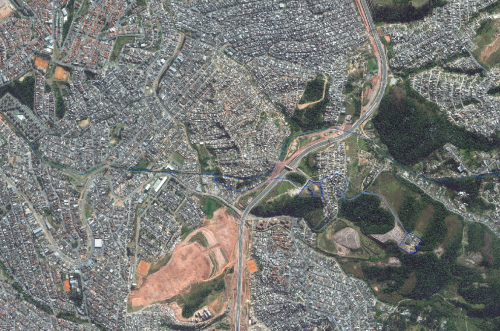
The digital edition of the magazine is distributed free of charge to readers who meet our qualifying criteria. You can apply to receive your free copy by completing this short registration form.
Sabesp MA is a mixed-capital company that provides water and sewage services to the 364 municipalities in the state of São Paulo, Brazil. It is considered one of the largest water and sewage service providers in the world, supplying potable water to 27.7 million people.
Two pump stations, Vila Bela and Jardim da Conquista, pump water from the Rio Claro aqueduct, each through an 800 mm pipe. The Vila Bela pump station supplied the Jardim da Conquista tank with an average flow of 708 lps, and the Jardim da Conquista pump station supplied the Jardim São Pedro tank with an average flow of 388 lps. This Jardim da Conquista pump station suffered electrical shutdowns due to failures in the supply of the power utility. Each time this occurred, staff had to be onsite to restart the pumps and electrical panels of the pump station.
When this occurred at night, it was unsafe to send Sabesp personnel to the pump station because of the pump station’s proximity to dangerous areas. With the inability to restart the pump station at night, approximately 240,000 people would remain without water supply until the next day. Using WaterCAD, Sabesp was able to develop an optimal solution that not only provided continuous water supply to the inhabitants, but also saved BRL 700,000 in energy costs.
Finding the optimal solution
Sabesp initially considered disabling the Jardim da Conquista pump station, and transferring all pumping to the Vila Bela pump station, which would directly supply the Jardim São Pedro tank and as a result, supply the Jardim da Conquista tank. However, to better understand the operation of the entire system, Sabesp first performed hydraulic modeling of the system using WaterCAD. This enabled them to develop an alternative supply strategy. They determined that by constructing a 17,696 m3 oversized water tank at Jardim São Pedro, if the pumps shutdown in the evening the tank would have sufficient autonomy to ensure water supply until the next morning.
WaterCAD helped determine the operating conditions of the existing pumps and if they were working within operating range. Sabesp hydraulic modelers were then able to test the setup of new pumps that would best comply with a flow rate of 390 lps in regular operating conditions, as well as a flow rate of 800 lps in the case of nighttime pump shutdown, so that the water tank could supply the population for up to 12 hours.
With WaterCAD, engineers were also able to find out how long the pumps would need to fill up the new tank before nightfall, in preparation for possible evening power outages. With this hydraulic modeling work, Sabesp reduced the time it would have taken for the Jardim São Pedro tank to reach its increased volume of 17,696 m3, from seven days and three hours to an average of 16 hours, increasing the water supply system reliability. In order to achieve this, the other tank, Jardim da Conquista, was also replaced, with doubled capacity from 4,347 cum3 to 8,694 m3, increasing operational security.
With the new pump station configuration, WaterCAD solved a recirculation problem with the existing pumps, allowing a better use of Jardim da Conquista tank upstream of the Jardim da Conquista pump station, with a reduced minimum operating level by 4 m.
Financial and community improvements
Using WaterCAD, Sabesp was able to select the optimal pumps for the Jardim da Conquista pump station, thereby increasing water supply reliability, providing about 240,000 inhabitants with continuous water supply, and improving their quality of life. Shutting off the Jardim da Conquista pumps during peak hours also reduced the electricity costs. Sabesp’s initial solution of closing the Jardim da Conquista pump station and transferring all pumping to the Vila Bela pump station would have cost around BRL 400,000 per year. However, using WaterCAD’s scenario management, Sabesp was able to not only eliminate the need for this cost, but also save an additional yearly BRL 700,000 in electric energy costs thanks to their solution of increasing the Jardim São Pedro tank volume.
André Luiz de Freitas, engineer at Sabesp MA concluded: “Using WaterCAD, we were able to analyze and compare different solutions to the pump shutdown problem, other than the initial considered solution which would have dramatically increased Sabesp’s operating costs.” The optimal solution offers a combination of advantages, from uninterrupted water supply to the affected population to large operation cost savings. With a total project cost of BRL 20,000 (man-hours only), increasing the volume of the Jardim São Pedro tank enabled Sabesp to achieve a 54-times return on investment in the first year.
The digital edition of the magazine is distributed free of charge to readers who meet our qualifying criteria. You can apply to receive your free copy by completing this short registration form.




